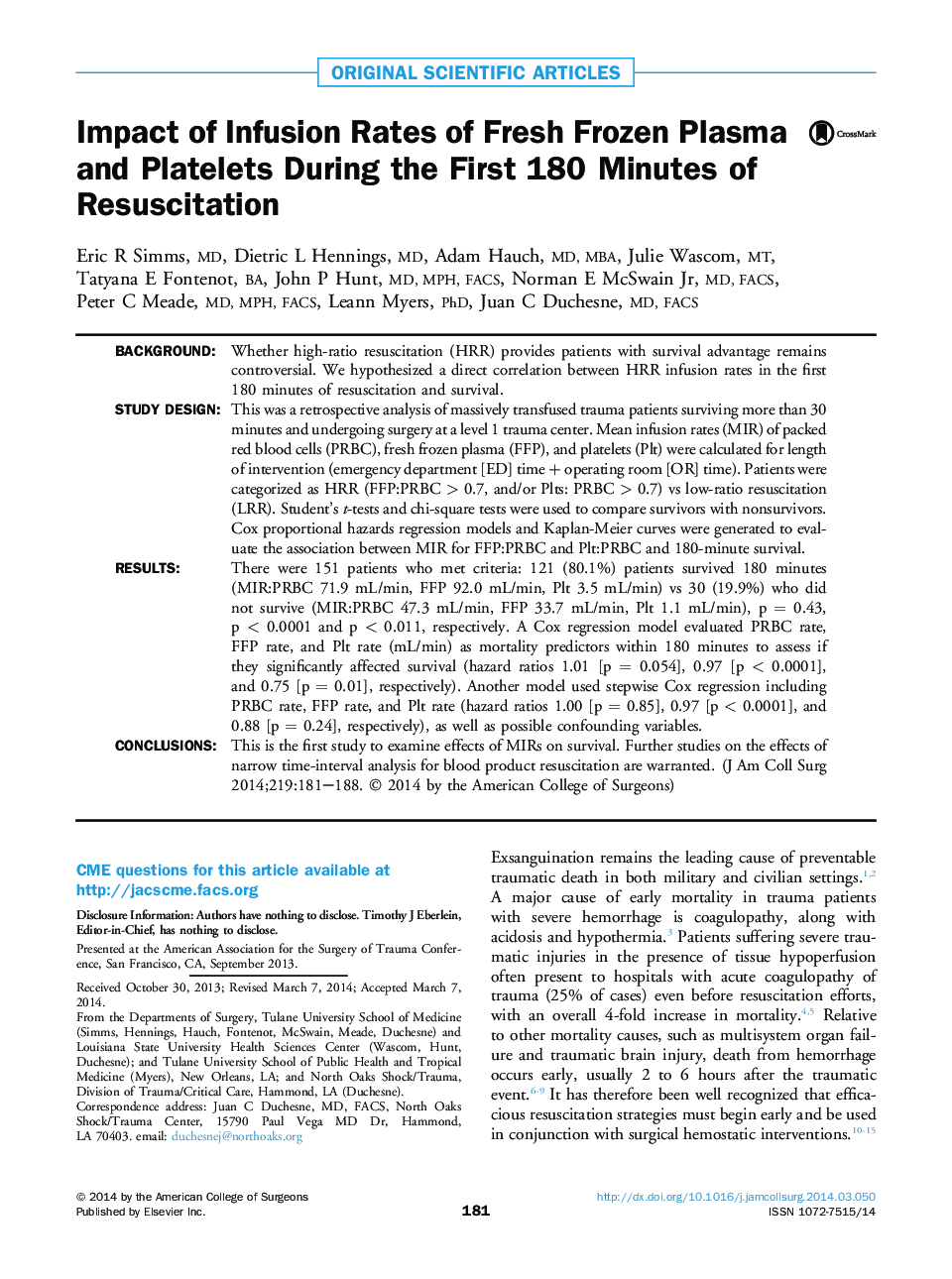| کد مقاله | کد نشریه | سال انتشار | مقاله انگلیسی | نسخه تمام متن |
|---|---|---|---|---|
| 4291403 | 1612231 | 2014 | 8 صفحه PDF | دانلود رایگان |
BackgroundWhether high-ratio resuscitation (HRR) provides patients with survival advantage remains controversial. We hypothesized a direct correlation between HRR infusion rates in the first 180 minutes of resuscitation and survival.Study DesignThis was a retrospective analysis of massively transfused trauma patients surviving more than 30 minutes and undergoing surgery at a level 1 trauma center. Mean infusion rates (MIR) of packed red blood cells (PRBC), fresh frozen plasma (FFP), and platelets (Plt) were calculated for length of intervention (emergency department [ED] time + operating room [OR] time). Patients were categorized as HRR (FFP:PRBC > 0.7, and/or Plts: PRBC > 0.7) vs low-ratio resuscitation (LRR). Student's t-tests and chi-square tests were used to compare survivors with nonsurvivors. Cox proportional hazards regression models and Kaplan-Meier curves were generated to evaluate the association between MIR for FFP:PRBC and Plt:PRBC and 180-minute survival.ResultsThere were 151 patients who met criteria: 121 (80.1%) patients survived 180 minutes (MIR:PRBC 71.9 mL/min, FFP 92.0 mL/min, Plt 3.5 mL/min) vs 30 (19.9%) who did not survive (MIR:PRBC 47.3 mL/min, FFP 33.7 mL/min, Plt 1.1 mL/min), p = 0.43, p < 0.0001 and p < 0.011, respectively. A Cox regression model evaluated PRBC rate, FFP rate, and Plt rate (mL/min) as mortality predictors within 180 minutes to assess if they significantly affected survival (hazard ratios 1.01 [p = 0.054], 0.97 [p < 0.0001], and 0.75 [p = 0.01], respectively). Another model used stepwise Cox regression including PRBC rate, FFP rate, and Plt rate (hazard ratios 1.00 [p = 0.85], 0.97 [p < 0.0001], and 0.88 [p = 0.24], respectively), as well as possible confounding variables.ConclusionsThis is the first study to examine effects of MIRs on survival. Further studies on the effects of narrow time-interval analysis for blood product resuscitation are warranted.
Journal: Journal of the American College of Surgeons - Volume 219, Issue 2, August 2014, Pages 181–188
